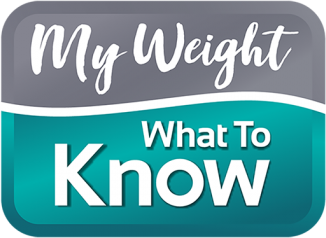By Carol Holland RD, CBE
Whether you’re a steak lover or a salmon fan, the type of meat you eat can impact your heart. Here’s what to know – and how to make smarter choices. Our bodies use protein to make tissue like bones, muscle and skin, and to heal after illness or injury. We also use protein to make enzymes and hormones, which are used for things like digesting food and regulating blood sugar.
When we eat meat, we’re getting all twenty amino acids (the building blocks of protein), including the nine essential ones that our body can’t make on its own – so we need to get them from food. Sounds good, right? The problem is, all meat is not created equal. Red meat (beef, pork and lamb) has more saturated fat than white meat (poultry and fish), and only fish contains the ultra-healthy omega-3 fats.
Does eating meat pose a risk for heart health?
One observational study showed that people who eat more meat have worse heart health (smaller ventricles, stiffer arteries, and poorer heart function in general). There is also some evidence that eating more meat can alter the gut microbiome, which may increase risk of heart disease.
Thinking about red meat in particular, one meta-analysis showed that eating 50 grams more red meat each day increased heart disease risk by 9%. If that meat was processed—like bacon, deli meats, or sausages—the risk jumped to 18%. Importantly, poultry didn’t show the same pattern. Eating more poultry was not associated with any increased risk of heart disease.
There are a few theories that could explain this difference. It could be because red meat has more saturated fat, which can raise cholesterol; or it might be the higher heme iron content, which is associated with more inflammation. It could also be related to trimethylamine-N-oxide (TMAO – a compound formed when gut bacteria digest red meat), which is associated with higher risk of heart disease. Processed meat has the added risk of a high sodium content that can lead to higher blood pressure. Even if you have a healthy diet in other ways, it doesn’t seem to counteract the negative effects of eating red meat.
But take heart, meat lovers! This doesn’t mean you have to be vegetarian to prevent heart disease. However, it is worth choosing your meat carefully.
One way to predict how healthy a meat is for your heart is by the size of the animal. Starting from the tallest and heading downward, we have cows; then pigs and lambs. Next is turkey, then chicken, and finally, fish. Generally, the closer an animal is to the ground, the healthier its meat is for your heart.
So, if you identify as a carnivore and don’t expect that to change anytime soon, you can start by choosing meat that comes from animals that are closer to the ground (i.e., poultry and fish), more often. When choosing poultry, take the skin off before cooking it. Use aluminum foil to keep the moisture in, if needed.
Fish is really the powerhouse of the meat world, because it contains high levels of omega-3 fatty acids that we can’t get from any other food. Your best bet is cold-water fatty fish like salmon, trout, anchovies and sardines.
If you are going to make red meat part of your diet, follow these tips:
- Limit red meat to once a week or less
- Choose lean cuts (round, sirloin, loin)
- Trim visible fat before cooking
- Keep portions no bigger than the palm of your hand
- Avoid frying or using extra fat
- Season with herbs and spices instead of salt
- Minimize or avoid processed meats
It’s a great idea to include non-meat sources of protein in your diet—not just for variety, but for your heart, too. Dairy products like lower-fat Greek yogurt and cottage cheese are excellent protein options. Eggs are also a solid choice. While egg yolks do contain cholesterol, they’re unlikely to raise cholesterol levels in your blood for most people.
Plant-based proteins don’t contain all 20 amino acids, but if you have a variety of different ones each day, your body will still get everything it needs. These foods also contain other helpful nutrients; for example, nuts and seeds have unsaturated fats and some fibre. Tofu is very versatile, taking on the taste of whatever you cook with it. And beans? They’re nutritional powerhouses packed with protein, fibre, and essential nutrients – well worth the occasional bit of gas. After all, a little bloating beats a blocked artery! Incorporating these foods regularly isn’t just good for protein—it’s a heart-smart move that adds fibre, antioxidants, and healthy fats to your plate.
While healthy eating is important for heart health, it’s not the whole picture—especially for those trying to manage their weight. Diet and exercise alone aren’t enough to help many people reach a healthier weight. Medical treatments are needed to address the biological changes happening in our bodies that can drive weight regain. To find a physician near you who specializes in weight management, click here.
Want motivation sent right to your phone? Sign up for our free weekly text messages to stay inspired on your health journey. Click here to sign up.
This article was sponsored by Novo Nordisk Canada. All content is created independently by My Weight – What To Know with no influence from Novo Nordisk.

